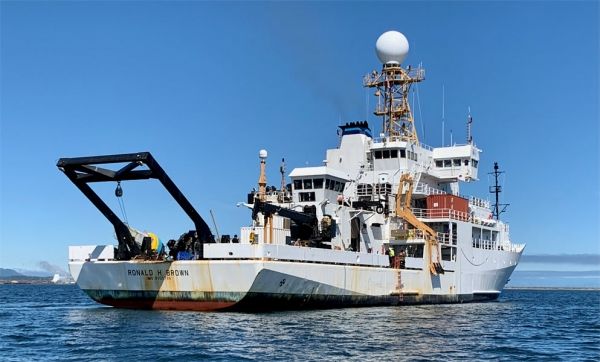Oxygen-depleted bottom waters occur seasonally along the continental shelf of Washington and Oregon when strong winds blowing along the coast in spring and summer trigger upwellings that bring deep, cold, nutrient-rich water to the surface. These waters fuel blooms of plankton that feed small animals like krill, which are food for many marine creatures.
When these blooms die off, they sink to the bottom, where their decomposition consumes oxygen, leaving less for organisms such as crabs and bottom-dwelling fish.
Measurements collected by commercial fishermen using dissolved oxygen sensors provided by NOAA”s Coastal Hypoxia Research Program, as well as data from local moorings also show a large area of hypoxic water.
Continue reading at NOAA Research
Image via NOAA Research


